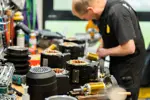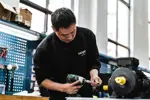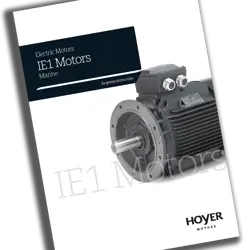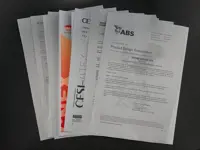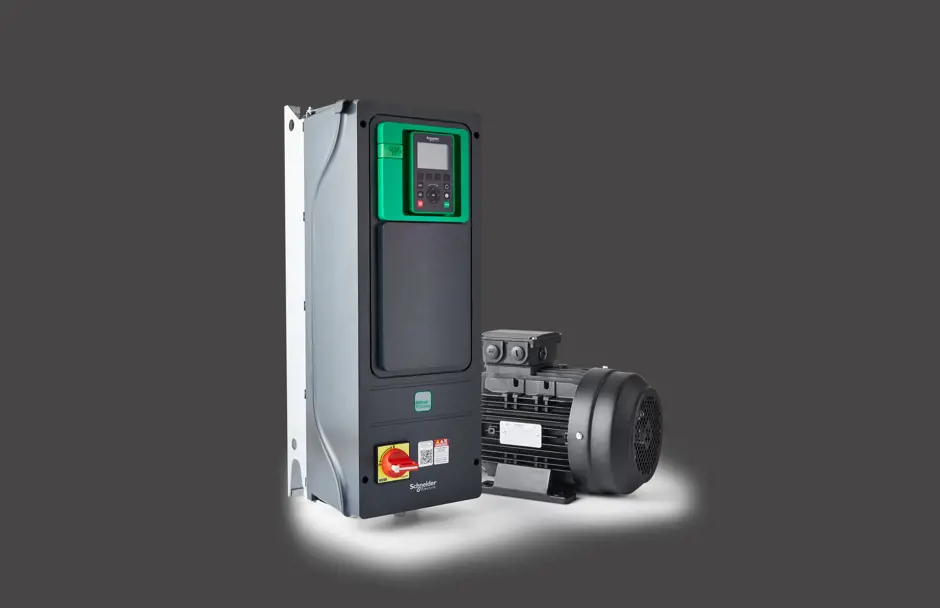IE1 electric motors
Despite an increasing focus on efficiency in the maritime industry, Hoyer IE1 marine motors are still widely used for all types of marine applications. IE1 motors are known for their reliability and cost-effectiveness. These motors are often utilized in environments where high efficiency is not the primary concern or in applications with limited operational hours.


Hoyer's range of IE1 motors
At Hoyer, our range of IE1 motors is designed to cater to industries where high efficiency is not the primary requirement. This type of electric motor is still prevalent in applications where the initial cost is a significant factor, or where motor usage is infrequent.
Our expertise with IE1 motors ensures they are reliable and suitable for specific industries and applications, such as in older machinery or in regions with less stringent energy efficiency regulations. While they are less efficient than their IE2, IE3, and IE4 counterparts, IE1 motors from Hoyer offer robust performance in suitable applications.
Size
56-400
Output
0.11-733 kW
IP class
IP55-IP66
Key factors to consider when selecting an IE1 motor
When it comes to selecting an IE1 motor, several key factors must be considered to ensure that it aligns with your specific industrial needs.
While IE1 motors may offer a cost-effective solution upfront, it's essential to consider their operational context and long-term implications.
- Industry requirements: Consider the specific needs of your industry, such as torque and speed requirements.
- Efficiency needs: Assess if the energy efficiency of IE1 is sufficient for your application.
- Operational frequency: Determine how often the motor will be in use; IE1 may be suitable for less frequent operations.
- Cost implications: Evaluate the cost-effectiveness of an IE1 motor in terms of initial investment and long-term energy consumption.
- Environmental impact: Consider the carbon footprint and energy usage in your decision-making process.
- Regulatory compliance: Ensure that the IE1 motor meets the regulatory standards of your region or industry.
These considerations will guide you in making an informed decision that balances cost, performance, and efficiency.
Technical information
Hoyer IE1 marine motors are still powerful despite the addition of both IE2 and IE3 motors to the range. IE1 electric motors are manufactured according to international standards under IEC.
The motors are asynchronous, low voltage three-phase TEFC motors. Type MS (aluminium) size 56-132 and Y2E2 (cast iron) size 160-400. Cast iron motors Y2E2 are available on request from size 80-450. All motors over size 132 have 3xPTC in windings.
The IE1 marine series is IP55 as standard and painted RAL 5010.
440 V Y – Hoyer IE3 motors ≤ 3.5 kW
440 V D – Hoyer IE4 marine motors ≥ 3.5 kW
690V D is available on request with other non-standard voltages.
All motors are supplied with SKF or similar premium bearings. All motors from size 160-400 have heating elements for stand still protection against condensation and tropical windings.
Transitioning from IE1 to higher efficiency motors
The trend of transitioning from IE1 to higher efficiency motors like IE2, IE3, and IE4 motors is gaining momentum, driven by the need for energy conservation and sustainability.
The benefits of this shift include reduced energy costs, lower carbon emissions, and compliance with evolving energy regulations. However, the transition poses challenges, such as higher initial investment and the need to retrofit or upgrade existing systems.
Despite these challenges, the long-term benefits of higher efficiency motors make this transition a strategic move for many industries.
Read about the differences between the IE electric motors.
What are the benefits of IE1 electric motors?
IE1 motors, while being the least efficient in the IE classification, offer certain benefits.
They are cost-effective in terms of initial purchase, making them a viable option for budget-conscious operations. In scenarios where motors are not heavily used or in applications with less demand for energy efficiency, IE1 motors can still perform adequately.
However, it's important to note that the energy consumption and performance of IE1 motors are lower compared to other IE motors.
What sets IE1 motors apart from other electric motors?
IE1 motors differ from higher efficiency motors primarily in their energy consumption and performance. They are less efficient, meaning they consume more energy to deliver the same output as more efficient IE motors.
This results in higher operational costs over time. However, their lower initial cost makes them a suitable option for certain applications. IE1 motors are often used in less demanding environments or in regions where energy efficiency regulations are not as stringent.


